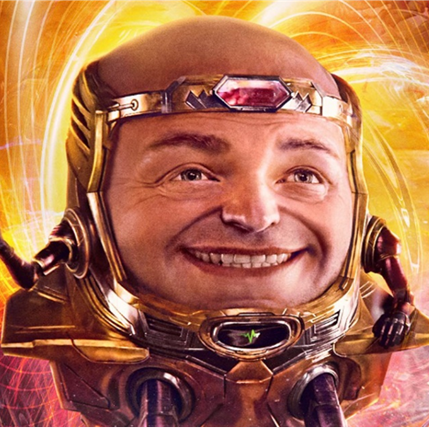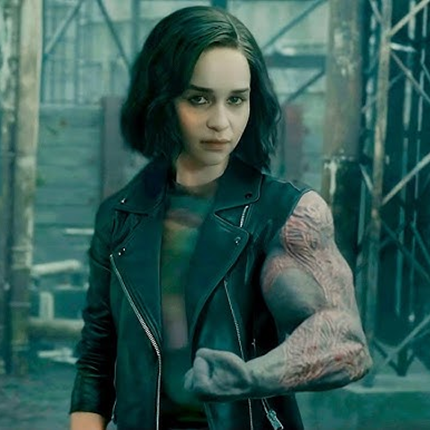From shooting Iron Man as a hail mary when faced with bankruptcy in 2008 to making history with Avengers: Endgame as the top grossing film of all time in 2019, the Marvel Cinematic Universe’s (MCU) development and expansion in that 10 years was almost like a superhero journey in and of itself. It is hard to forget the buzz around Endgame near its release in 2019 and everyone’s desperate attempts to evade spoilers as the movie hit the theatres. Nonetheless, amidst the excitement for the grand finale of ‘Phases’ one to three also came a question:
How will MCU ever top what it achieved in Avengers: Endgame?
Some believed it would be downhill from that point onwards, while some believed that the newer characters introduced during the first three phases will be able to carry the universe from that point onwards. And as much as I was part of the latter group of people, after seeing the various movies and TV series of Phases four and five, I have to concur with the fact that the MCU has declined since its peak in 2019.
This article is a collection of my opinions on why that is the case. I will not be able to cover every single movie and series that came out in the span of one article, but I will be citing the more notable series in my explanation.
Production Quality
Firstly, the production quality of the MCU has been extremely inconsistent since phase 4 began. This refers to elements such as CG – or what I’d like to call the hardware of the movies.
Thor: Love and Thunder was entirely in black and white for almost 10-minutes of the show, but it did not seem like the lack of colour added meaning to the scene. She-Hulk’s CG came off as unnatural and did not blend well with other natural elements of the series, which was a rather big problem for a series whose main character is fully dependent on CG. And then there were the…absolutely baffling designs of M.O.D.O.K, in Ant-Man and the Wasp: Quantumania and the G’iah-Drax fusion in the final scenes of Secret Invasion.


From the pinnacle of CG in Dr. Strange’s battle with Thanos in Avengers: Infinity War, MCU really has fallen far. This is an important point to bring up because this decline in production quality is enough to make the movies and TV series objectively less appealing for viewers to watch. The visual input from a screen is the first stimulus that any viewer will receive when watching anything, and thus the acceptability of a show’s visuals is its basic starting line for any performance.
The MCU’s visuals have become so inconsistent that it forces viewers out of their immersion in the plotline; this puts its shows below the basic starting line. Not every viewer can afford to invest emotions and time into entertainment and tolerate the visuals of a film in order to scrutinise its characters and plot, and it would be unreasonable to expect every viewer to do that. Which is why when visuals are as bad as She-Hulk and MODOK (the photo above is a poster of the movie. Movie posters are supposed to attract people to watch the film.), there is little to no reason for them to continue watching the next episode or to remain invested in the universe.
One of the main reasons seems to be how Marvel treats the VFX studios it works with – in July 2022, Taika Waititi, director of Thor: Love and Thunder, sparked controversy when he mocked parts of Korg’s CG in the movie. VFX artists broke their silence on how Marvel has tight budgets and demand for multiple versions of the same scene, which creates an incredibly stressful working environment and long working hours for special effects artists.
These are problems that professional artists struggle with generally as they are placed in environments tough on physical and mental health due to the field’s innately paradoxical nature of rushing creativity to demand results under deadline. Nonetheless, these issues seem exacerbated when it comes to Marvel because of how big of a player they are as a client.
Few studios can truly afford to straighten out their backs and say “I don’t need you” to Marvel’s face, and they end up undercutting one another to get the deal. This leads to a toxic cycle of VFX studios getting progressively paid less to win bigger contracts that are supposed to be more lucrative.
Pale character stories
While the underpayment and low budget VFX studios are forced to work with shows the unbecoming stinginess of Marvel as a corporation, the tight deadlines reveal something more fundamental about what went wrong with MCU since phase four began: Marvel is rushing too much to expand its universe. The quality of its stories, arguably what was the soul of the first three phases, is suffering because of it.
Take for example, Doctor Strange: Multiverse of Madness (hereafter referred to as DSMOM). This was probably one of the most important movies to Marvel because it is the first formal cinematic introduction to the multiverse, which is the focal point of phase four onwards. However, in their rush to introduce the multiverse and a new character (America Chavez) important to this new universe, they seemed to have sacrificed the character nuances in both Wanda and Dr. Strange.
Wanda had extremely high potential to become a conflicted character by the end of WandaVision. The anger from seeing her lover’s skull crushed open and body dismembered in front of her manifested itself in the form of a false reality created by herself, where she gets to live the illusions of having a family by taking an entire town hostage. She showed genuine panic and guilt when she realised that she was passing on her pain to innocent people, and ultimately chose to let them go knowing it would end her dream.
Nonetheless, her anger and resentment towards the misfortunes in her life remained unresolved. In Doctor Strange: Multiverse of Madness, this internal conflict was completely flattened. She became a character filled with nothing but cynicism. There was not an ounce of remorse or doubt in her action of destroying Kamar-Taj and killing sorcerers.
A similar issue could be observed with Dr. Strange. In Avengers: Infinity War and Avengers: Endgame, Dr. Strange was crystal clear about being willing to sacrifice one or two people for the greater good of saving Earth; and true enough to his resolve, he was essentially the one who told Tony he had to die in the end. In DSMOM, he pulled a 180° and banked the entire fate of the multiverse on the possibility that America Chavez would learn how to control her powers of travelling between universes, even though the safe and sure decision at that point in time would have been to end America’s life.
I would like to stress that these criticisms are not made based on the likeability of these endings. I am perfectly willing to accept that Wanda became a villain and that Dr. Strange decided to save America in the end; it is the abruptness in these changes of heart that failed to be convincing. The actions of these characters are extremely inconsistent with our prior knowledge of them, and the movie did not do enough to buttress this change.
The problem with such writing is that it makes long-time fans disappointed in the development of the MCU. Character building and struggles has always been the heart of the Marvel movies before, and the MCU’s current quest for expansion has been giving fans from that older era very little returns for the emotional investment they have put in over the years.
New characters being introduced into a series as established as the MCU is already dicey to begin with, but the current MCU’s way of introducing new characters and concepts makes it feel as if the more original characters are being unseated by the new ones, and are simply stepping stones for Marvel to expand its universe.
The Good Stories
Having said that, it is also important to note that Phase Four and Five have not been entirely a train wreck. Spider-Man: No Way Home, Guardians of the Galaxy Vol. 3, and Loki are all works that have been well-received and, in my own opinion, great shows.
I believe the defining difference between these shows and the ones that are constituents of the MCU’s decline is precisely what was pointed out earlier in this article: the quality of the stories. The good movies and shows were not focused solely on forwarding the multiverse saga and expanding the marvel universe; they were focused on making the characters face their biggest struggles all along, and they gave each story the ending they deserved.
Peter Parker ultimately had to choose between his identity as Peter Parker and Spider-Man. Peter Quill learned to accept that the Gamora he knew and fell in love with will never come back. Loki was forced to confront the fact that despite his nature as a fickle-minded trickster, he did also yearn for genuinity and he felt for the people around him. In fact, Loki is the perfect example that expansion of universe and good storytelling can co-exist.
It was the first time in the MCU that the concept of multiple universes and the existence of Kang (the major villain from phase four to six) was touched upon, but Loki’s own character development did not suffer because of the introduction of this new concept and other characters on the show.
How will MCU ever top what it achieved in Avengers: Endgame?
This was the question I posed at the start of this opinion piece. The answer I have to that, is that the MCU needs to slow down and take the criticisms it has received seriously, especially on the corporate management level. The reduction in both production and story quality I have elaborated on can be explained by Marvel Studios’ decision to stubbornly work in an ivory tower instead of listen to what other parties of this journey have to say. The studio needs to start having better bilateral communications with VFX artists and give reasonable deadlines; no creator ever enters a field aiming to create something so bad that even the untrained eye cannot accept.
Start taking the reviews of the fans seriously; the studio has made it clear they are aware of the deteriorating opinion the audience have on MCU, most notable evidence of this awareness being the famous breaking of fourth wall in the last episode of She-Hulk. However, the studio has chosen to sum these opinions as a “debate of the internet” (quoted from the aforementioned scene). What the studio needs to understand is that these opinions are not debates, they are disappointments as to how little effort is being put into the quality of the stories.
This article was an attempt at pointing out why the MCU has lost its charm since the days of Avengers: Infinity War and Avengers: Endgame. It most likely did not cover all the points and might not fully resonate with everyone, but I hope it at least provided one explanation of what went wrong with Marvel since its peak in 2019.
The MCU has been a big part of my life ever since I watched the first Iron Man movie in the cinema in 2008, and the richness of its stories and characters is something I truly miss, and hope will return one day.


